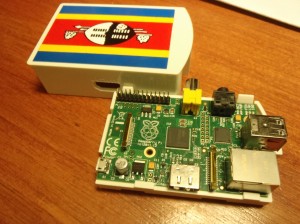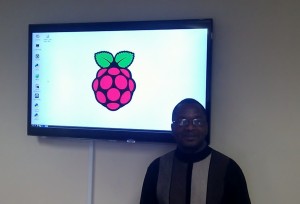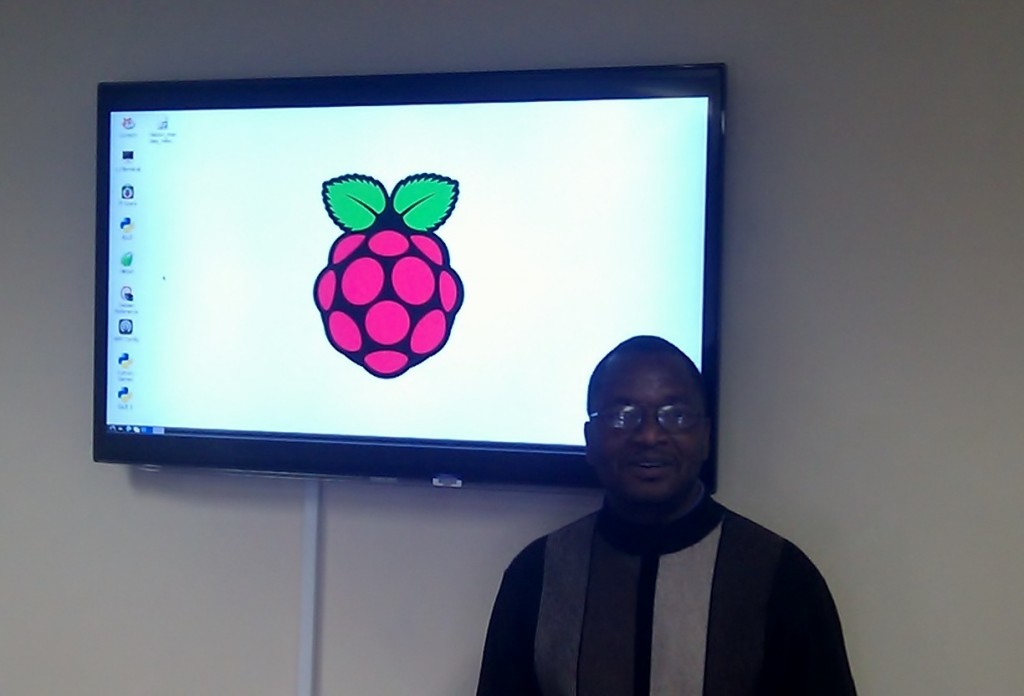I wrote the below article a few weeks ago for the Swazi Sojournal, our Peace Corps post newsletter. As I am nearing the end of our life in Swaziland, I am finding it incredibly important to disseminate the knowledge I have accumulated in my time here. So many aspects of development in this country could be changed and revolutionized with the creative application of technology.
Raspberry Pi Imnandzi!
While your taste buds dance in memory of delicious fruit pies at your favorite breakfast joint, I want to talk to you about a very special inedible Pie. The Raspberry Pi is a fully functional computer that is going to blow your mind. Raspberry Pi is making tremendous impacts in developing nations all over the world right now. I read new reports every few weeks about another low-income school that is installing its first computer lab built around Raspberry Pi. It’s not that the Raspberry Pi is exceptionally sophisticated, or extremely fast. What makes the device exceptional are only a few aspects:
- It’s very simple to setup and use
- It’s really inexpensive
- The software is free, fairly easy to use and virus free!
- And did I mention it is really inexpensive?
The Raspberry Pi is a very small computer about the size of your old phone. The company likes to say it’s the size of a credit card, but it stands about 2 centimeters tall. The newest version of the Pi comes with two USB ports, a 700 MHz processor, 512mb of memory, an old-school RCA video out, a newer HDMI digital video out, a sound card, a network card, and that’s it. Although the Pi really is a fully-functional computer, like any other

computer, it requires additional items to actually be useful. The power cable is the same one used for data on Kindles, Androids, and a lot of newer Nokias. These can be purchased at nearly any phone shop in the country. All of these items can be purchased in Swaziland at some of the bigger computer shops such as Computronics (Don’t forget to visit their coffee shop while you pick up accessories).
Anyone who has talked to me about computers longer than 5 minutes will catch me saying something about Linux and other “Free and open-source software (FOSS).” The importance of FOSS can be truly appreciated in the form of the Raspberry Pi. This software is free to modify, free to distribute, and free to do whatever you want with it. The free nature of the software also allows you to add on loads of other free software, from software similar to Microsoft office to math and memory card games for the wee ones. You can also go the route of the Kingdom of Bhutan and install Khan Academy software on the Raspberry Pi and use it as a server for other computers!
Truly the best part about Linux in relation to computers in Swaziland is its near immunity to viruses and malicious software. You can insert USB sticks from anyone’s computer into a Raspberry Pi and it will not get infected by a virus. This feature should sell any hesitant ICT teachers. The software itself needs to be copied to an SD card before turning the Pi on. To add any additional software requires the Pi to be connected to the Internet, or you to download it once, then copy it to all the SD cards manually. Once you have a single Pi the way you want it, it’s a fast process to spin up a lab of 10 of these things.
Do you remember what I said about the Raspberry Pi being inexpensive? I recently purchased my first Raspberry Pi for $35.99 US. Plus shipping and the generic white case for it, I totaled a purchase of this wonderful device for $49.49. And it arrived a week later as it was sent from South Africa. If you convert it to Emalangeni at the average exchange rate of E8=$1 then we are talking E396. That is a functional computer starting at less than E400, excluding Swaziland shipping charges. Order yours from RS Delivers in South Africa.
I mentioned above that the Pi comes without any of the stuff you need to actually make it useful. In the table below I have outlined a really generic price estimate of how much E would be needed to bake your own Pi. At E1625 I will tell you this is 1/3 the price of any desktop computer or laptop I have seen in the country. For less than $2500 a computer lab with 10 Pi could be outfitted. This figure means some locations with lower resources for computers may finally have an option within reach.
| Rasberry Pi + basic case | 400 |
| Keyboard | 75 |
| Mouse | 50 |
| HDMI TV (to use as a monitor) | 1300 * |
| SD Card | 100 |
| Power Cord | 100 |
| HDMI or RCA cable | 100 |
| TOTAL | 2125 * (*table edited August 1, 2013) |
If you have interest in the Raspberry Pi, I have lots of resources, and a Swazi friend at UNISWA that is testing a few out. Additionally the Swaziland Computer Society has a few http://www.facebook.com/groups/Swazi.computers, and they would be an excellent source of information on Raspberry Pi, and any other computer questions related to technology in Swaziland.
If you are driven as I am to see technology adapted and adopted by developing communities, I highly encourage you to find yourself a few pieces of Pi. If I can get Mkhulu Elliot to enjoy a slice of Pi, you will too.

The Raspberry Pi approach of creating a platform that people can build on is completely in line with the Peace Corps approach to development. May PC Volunteers never go hungry again.
